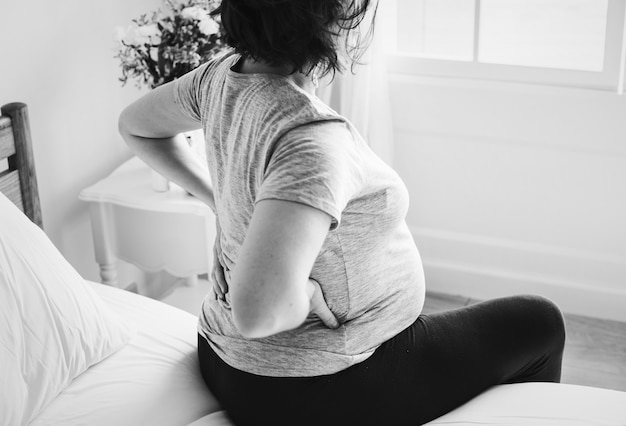-
22 , Jessore Road , Barasat ,Kolkata 700124
22 , Jessore Road , Barasat ,Kolkata 700124

Hello Readers!
Welcome to the blog page of Fitech one of the best gym equipment suppliers in Kolkata.
Do you experience burning pain down your leg or jolting pain in your lower back? You’re not alone. Up to 40% of people will experience sciatica in their lifetime.
Sciatica is a general term that refers to pain caused by a pinched nerve, but many people use the term to describe an irritated sciatic nerve. The sciatic nerve trails down much of your lower body. When compressed, it causes radiating leg and back pain.

The sciatic nerve is the longest and widest nerve in the body. It runs down each side of your body, from your lower back to your feet. At the base of your spine, the sciatic nerve is about a ½ inch wide. As it extends through your glutes and hamstrings, the nerve widens to about the size of a penny. The sciatic nerve rests near your piriformis muscle and continues down the back of your legs.

People typically experience sciatica after age 30. Risk factors include age and occupational factors like repetitive lifting or vibrations from driving. The most common cause of sciatic nerve pain is a slipped or herniated disk. This is especially true for people under 40 years old. An estimated 90% of sciatica cases result from a herniated disk.
Between each spinal vertebra, you have an intervertebral disk. These disks are made of a protective, jelly-like substance with an elastic outer ring. When a disk slips through its outer ring, it compresses the nerves in your back—and often, your sciatic nerve.
In older adults, bone spurs and arthritis can lead to sciatic nerve pain. As you age, your spine narrows. Spinal stenosis, or the narrowing of the spinal canal, can also cause sciatica in adults over age 60. If you have severe sciatica, talk to your physician about the cause.
Sciatic nerve compression often results in pain in your right or left leg. You may feel pain in the front, back, or side of your thigh. Sometimes, the pain can radiate to your groin.

Pregnant people often experience sciatic nerve pain. Sciatica usually starts during the third trimester when hormone relaxins increase. These relaxins prepare your body for birth by loosening ligaments in and around the pelvis. Loosened ligaments and a shifted center of gravity can pinch your sciatic nerve.
Fortunately, sciatica usually disappears after giving birth. Until then, you can relieve sciatica while pregnant by:
Symptoms of an inflamed sciatic nerve range from mild to debilitating. The sciatic nerve splits to run down both legs, but people usually feel pain on only one side of the body. Pinched sciatic nerve symptoms include:
You may feel pain or numbness along your sciatic nerve, including your lower back, hip, buttocks, and leg. Some people have pain down to their feet. People with sciatica experience both burning pain and sharp, shooting pain.
In most cases, sciatica will go away on its own. Whether it appears suddenly or slowly, sciatica tends to dissipate after four to six weeks with no long-term effects. About 80 to 90% of people with sciatica don’t require surgical treatment.

As mentioned above, sciatic nerve pain often resolves on its own. However, that doesn’t mean you can’t try to find relief in the meantime. Medications, targeted stretches, and light exercise can reduce hip and back pain. You should speak with your doctor and follow their recommendations for treating sciatica.
Simple movements like going for a walk can help relieve lower back pain. Stretching the muscles around the sciatic nerve helps reduce the pressure stiff muscles put on the nerve. Tight piriformis and hamstring muscles often irritate the sciatic nerve, resulting in buttocks, leg, and back pain.
One way to treat sciatica at home is to move—with your doctor’s approval, of course. Try these exercises and stretches to loosen muscles and relieve back pain. It may help to do these sciatica pain relief exercises daily.
These floor exercises can be completed at home without the use of equipment.

Regularly doing pelvic tilts stretches your lower back and strengthens your abdominal muscles. A strong core supports your spine and helps you maintain good balance.
Sciatica causes leg pain. Seek relief with a high school gym classic: the hamstring stretch. You can reduce the pain caused by tight hamstrings and an inflamed sciatic nerve with the elevated hamstring stretch or the scissor hamstring stretch.
You can use a dining chair, ottoman, or step to perform this stretch.
For a slightly different take on the hamstring stretch, the scissor stretch is done with both feet on the floor. This exercise loosens muscles for less pressure on the sciatic nerve and ischial tuberosity.
Pose like New York City’s most notorious bird: the pigeon. (NYC is thought to have between 1 and 7 million pigeons!) You can perform the pigeon pose reclining, sitting, or with one leg forward for a deeper hip stretch. Beginners should start with the reclining pigeon pose.
The pigeon stretch opens your hips, targeting your hip flexors, glutes, and piriformis muscles. When these muscles are tight, they irritate your sciatic nerve.

All Fours Extensions are excellent for strengthening your core and lower back. A strong core is vital for maintaining balance and reducing the risk of spinal injuries. Start by focusing on leg extensions, and if you feel comfortable, incorporate arm extensions.
Maintaining mobility and flexibility is crucial for spine and muscle health. Lower trunk rotations are a simple exercise to improve spinal flexibility and loosen the lower back. Always consult with your physician before performing twisting exercises.
AeroPilates customers can use their reformers to find relief from sciatica. The founder of AeroPilates, Marjolein Brugman, recommends performing the Elephant and Eve’s Lunge exercises daily. These exercises are easy to integrate into any workout routine.
The Elephant exercise stretches the hamstrings and lower back while realigning the pelvis. Marjolein suggests using two cords or springs for medium resistance. You can purchase medium tension cords and light cords from Fitech, the best gym equipment supplier in Kolkata.
Eve’s Lunge targets the hamstrings and requires two springs or cords. Lighter cords make the stretch easier.
Our line of back health equipment at Fitech, the premier gym equipment supplier in Kolkata, helps you decompress and stretch from the comfort of your home. We’ve discussed exercises to treat sciatica at home (with your doctor’s approval). Our back health equipment assists in stretching, decompressing, and realigning your spine and hips, promoting better back health.